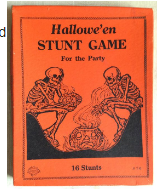Some Insider Tips
The time to think about properly protecting fine art is before a loss occurs. Sadly, many collectors are unaware of the exposure they have until it’s too late. Here are some tips to keep in mind when considering how to best safeguard your fine art.

Know Your Insurance Policy
You may have severely limited coverage if you are insuring your art under your homeowner’s policy. Consider purchasing a separate valuable articles policy. Valuable articles policies often feature a low or no deductible, worldwide coverage, coverage in transit, and coverage for perils that are often excluded from standard homeowners policies, such as floods and earthquakes.
Maintain Updated Information
The importance of updated appraisals cannot be overstated. One can imagine how much more difficult it is to value an item that no longer exists, having been destroyed in a fire or stolen. Artwork should be insured at Replacement Value, not Fair Market Value. Replacement Value is the amount one would have to pay to replace an item with a property of like kind, age, condition, and quality within a reasonable length of time in an appropriate and relevant market.
In addition to appraisals, it is important to keep copies of all invoices, provenance documentation, repair/restoration records, and condition reports.
If you have valuables at multiple homes or other locations, a regular inventory audit should be conducted so all items are accounted for, identified, and inspected for condition. Documentation should be stored either off-site or digitally, or ideally, both.

Have An Emergency Plan
An emergency plan is especially important if you live in a catastrophe-prone area such as California or coastal Florida. It should be simple enough to be executed on short notice. For instance, have a designated safe room and blocks prepared to keep artwork 6 inches off the ground (in flood-prone locations). Some insurance carriers offer emergency assistance with pre-vetted transportation and storage professionals. Maintain a list, with contact information, for packing, moving, and storage professionals who you can call on when an emergency arises.
Educate Staff
Household staff should be aware of how to clean artwork, especially what kind of cleaners are safe to use on certain materials. Staff should also be educated on how to implement an emergency plan and who to call for assistance.
Final takeaway: Always contact your insurance agent with questions regarding coverage options and policy enhancements and hire a qualified appraiser to make sure your art is properly valued.
by Shelli Beermann
Affiliate Appraiser
Veritas Fine Art Appraisals & Consulting






